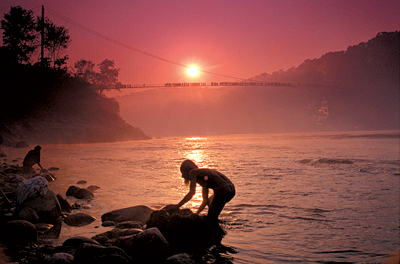Maghe Sankranti
Maghe or Makar
Sankranti is one of the most significant festivals celebrated by Nepalese. Sankranti refers
to the first day of every month. This is the reason why the festival is called
Maghe Sankranti. This festival is celebrated to mark the end of month Poush - a
month in which all religious ceremonies are forbidden. Apparently, it signifies the beginning of the holy season.
According to Mahabharat,
Bhisma, who had the power to control his own death had chosen to die on the same
day. So , it is believed that those who die on this day achieve Mokshya i.e.
they will be free from the suffering of life, death and rebirth.
On this day, people take a holy bath on holy rivers early in the morning
which is known as ' Makar Snan'. Sankranti fairs are held on banks of holy
rivers like Trishuli and kali Gandaki.
The Kankai river as well as Devghat are famous for holy bath and pilgrims from
places as far as India come to take a holy dip in these rivers.

Pic: Holy Bath in Gaighat, Source: ecs.com.np
The festival is referred to as Maghi in the Tharu community. This is one of their biggest festivals and lasts longer than in other communities. They have a huge feast starting from the end of Poush to 3rd of Magh. Newars on the other hand refer this festival as Maghe Sangranti Ghyo Chaku Sanun. On this day they massage their body and head with Sesame oil.

Photo By: Amish Regmi
The
festival is particularly special because of the varieties of food items that is
prepared on this day. The main food item on this day is laddu made of teel
(sesame seed fudge) and bhuja (puffed
rice), sweet potatoes , yam and chaku (molasys). These food are healthy and
bring warmth to the body in the cold season.

Photo By: Bikalpa Gautam















